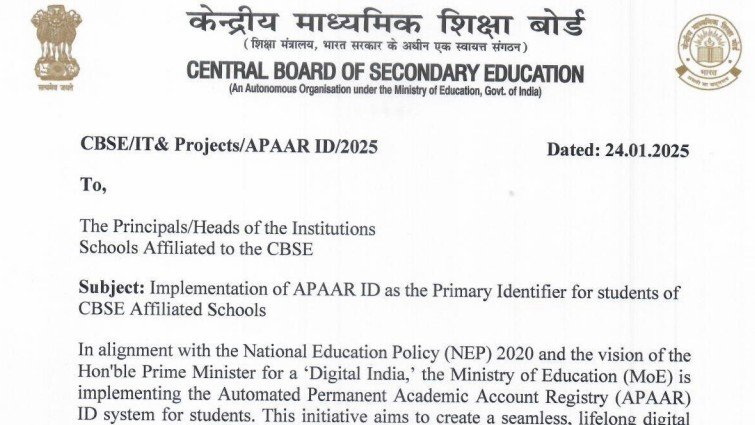The Central Board of Secondary Education, or CBSE, has issued a notification that students in affiliated institutions would begin using APAAR ID as their primary form of identification. School and students can get this notice on cbse.gov.in, the official website of the CBSE.
The Board developed “APAAR ID Monitoring (AIM),” an online platform, to monitor the generation of APAAR IDs at schools connected to the CBSE. Now that the helpline number has been set up, schools can call in case they need help. 1800-889-3511 is the toll-free helpline number. Candidates can visit the official CBSE website for more details.
The announcement states, ‘In alignment with the National Education Policy (NEP) 2020 and the vision of the Hon’ble Prime Minister for a ‘Digital India’, the Ministry of Education (MoE) is implementing the Automated Permanent Academic Account Registration (APAAR) ID system for students. This initiative aims to create a seamless, lifelong digital identity for every student, promoting transparency, accountability, and efficiency in academic record management.’
There will be six steps in the APAAR ID implementation procedure for schools:
Step 1: Conduct PTMs- In order to present APAAR ID to parents and children, schools must arrange PTMs. During these sessions, they will discuss the benefits and relevance of the ID.
Step 2: Consent Form Distribution and Collection- Parents must get tangible consent forms from schools. These documents must be signed by the parents, who also give permission for the creation of APAAR IDs using their Aadhaar information.
Step 3: Student Data Verification- School administrators will use the UDISE+ portal to confirm that student data, including name, birthdate, and Aadhaar number, is accurate.
Step 4: APAAR ID Generation– Using the UDISE+ portal, which will be safely connected to students’ Digilocker accounts, schools will generate APAAR IDs. The parents will receive a confirmation SMS after it is finished.
Step 5: Distribution and Integration- APAAR IDs will be distributed by the schools to parents and students.
Step 6: Addressing Errors- Schools will direct parents to Common Service Centres (CSCs) for resolution in the event of any inconsistencies.




